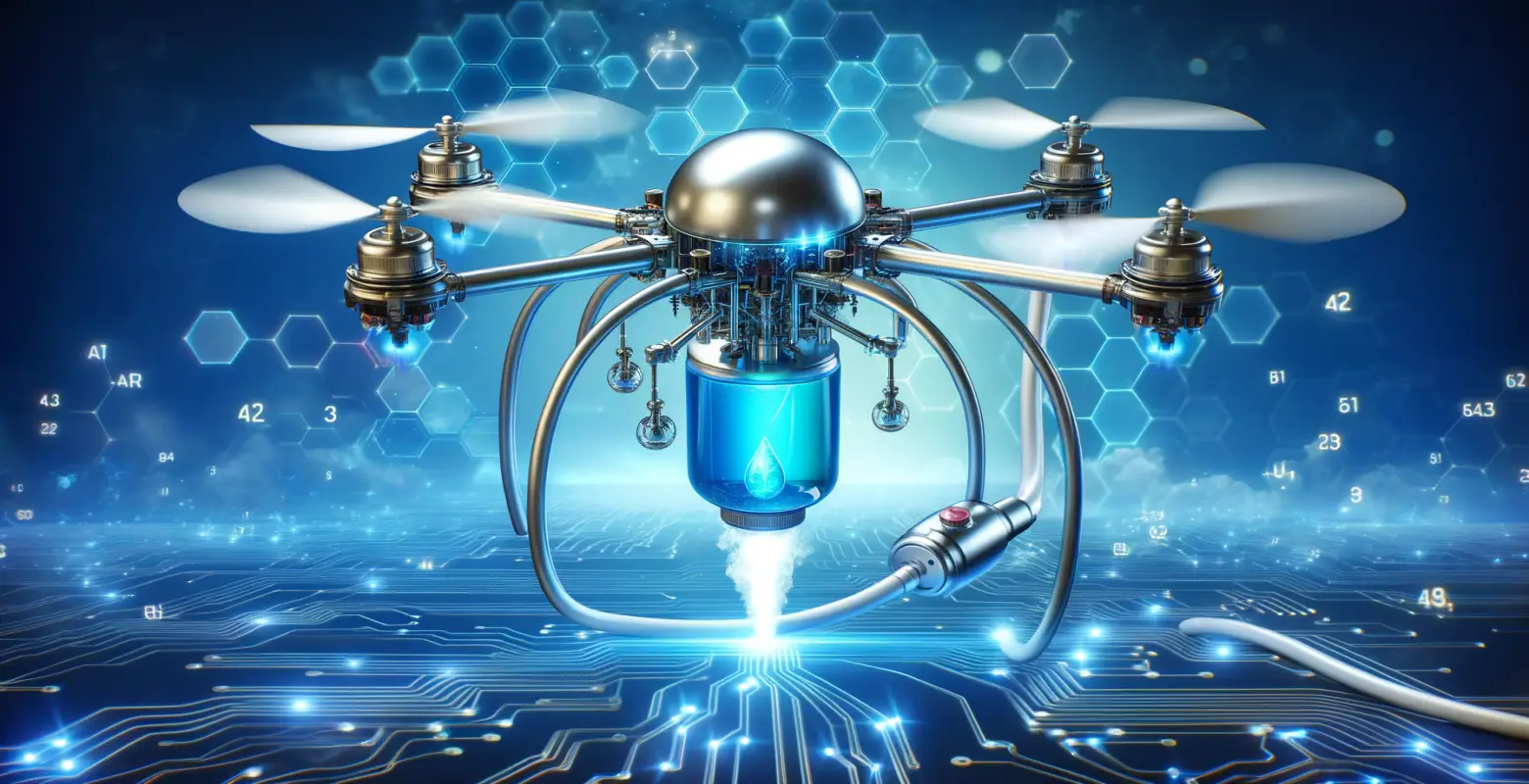New drone power technologies - is hydrogen the future?
Introduction
In the era of rapid technological development, drones are gaining popularity in many areas of life. From photography and filming, through delivering goods, to advanced applications in industry and agriculture, unmanned aerial vehicles have become an integral part of the modern world. However, like many new technologies, the development of drones is not without challenges. One of the most important is the issue of power supply. Traditional lithium-ion batteries, although common, have their limitations. In this context, hydrogen is increasingly being discussed as a potential fuel of the future for drones. Can hydrogen truly revolutionize the way we power these devices? In this article, we will take a closer look at this fascinating issue.
History and development of drone power technology
Drones, also known as UAVs (Unmanned Aerial Vehicles), were initially developed mainly for military purposes. Over time, however, they found wide application in civilian sectors. In the early stages of drone development, the most commonly used source of energy was internal combustion engines, which were loud and not very environmentally friendly. With technological progress, there was a shift in favor of lithium-ion batteries, which offer a quieter and more environmentally friendly alternative. However, these batteries have limited flight time and require long charging, which poses a significant obstacle to fully utilizing the potential of drones.
Advantages of using hydrogen
Extended flight time: One of the biggest advantages of using hydrogen as a power source is significantly extended flight time compared to traditional batteries. Hydrogen, as a very lightweight and energy-dense fuel, allows for longer operations without the need for frequent recharging.
Environmental friendliness: Hydrogen is a clean fuel that, when burned in fuel cells, emits only water as a byproduct. Therefore, drones powered by hydrogen can contribute to reducing the emission of harmful substances into the atmosphere.
Short charging time: Charging hydrogen cells is much faster than charging traditional batteries. This allows for more efficient use of drones in operations requiring quick response times.
Technical aspects of hydrogen power
Hydrogen power technology is based on fuel cells that convert the chemical energy of hydrogen into electrical energy. This process is not only efficient but also safe, provided that appropriate procedures are followed. The key element here is hydrogen storage, which can be done in the form of liquefied gas, compressed gas, or in chemical forms such as metal hydrides.
Challenges related to hydrogen technology
Costs: One of the main challenges is the high costs of hydrogen production and storage. Although this technology has enormous potential, it is currently relatively expensive, which is a barrier to its widespread implementation.
Infrastructure: The development of infrastructure for hydrogen production, storage, and distribution is crucial for the success of this technology. In many regions, there is a lack of adequate facilities, which hinders the implementation of hydrogen power systems.
Safety: Hydrogen, while efficient, is also highly flammable. Ensuring appropriate safety standards is crucial to avoid potential hazards associated with its use.
Examples of hydrogen-powered drone applications
There are already first examples of hydrogen-powered drone applications emerging worldwide. Examples include projects such as the HyDrone 1800, created by MMC, which can fly for over 4 hours on a single hydrogen refueling. Other companies, such as Doosan Mobility Innovation, are also working on introducing hydrogen drones for commercial use, focusing on infrastructure monitoring and goods delivery.
The future of hydrogen-powered drones
As hydrogen technology advances, we can expect an increasing number of applications for drones powered by this fuel. The ability for prolonged flight, combined with the environmental benefits of hydrogen, makes this technology have the potential to revolutionize the drone industry. However, the success will depend on overcoming existing challenges, such as costs and infrastructure.
Summary
Hydrogen as a power source for drones is a topic that arouses much excitement and hope for the future. Its potential to extend flight time and reduce emissions makes it an attractive option for future technological innovations. However, for this technology to gain widespread use, overcoming challenges related to costs, infrastructure, and safety is necessary. If these obstacles are overcome, hydrogen could indeed become the fuel of the future for drones, opening up new possibilities and applications in many fields.






Number of comments: 0